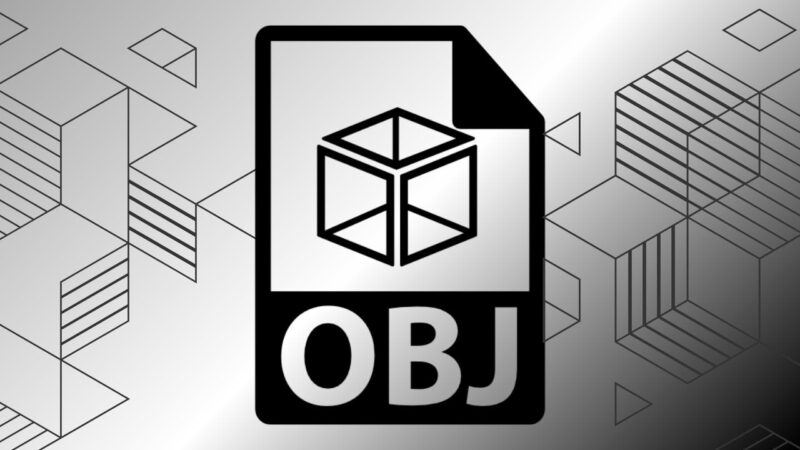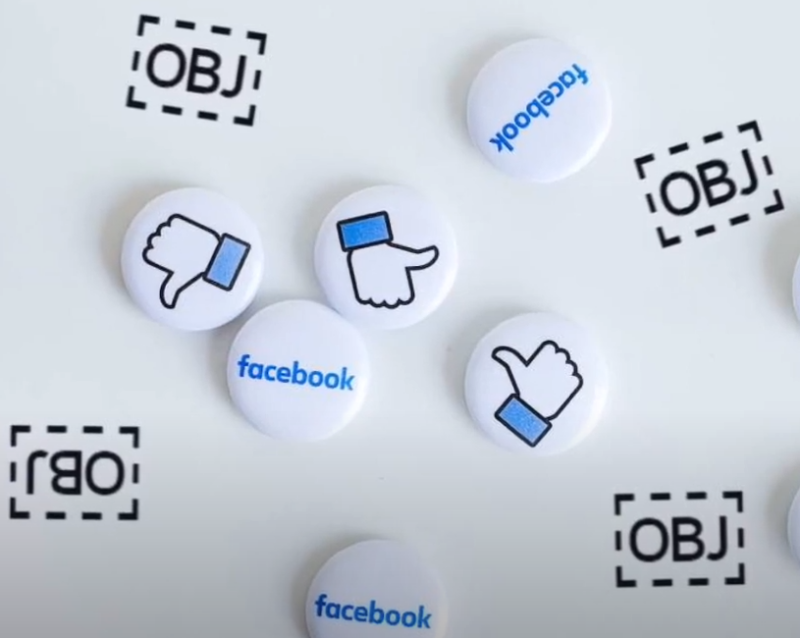In today’s digital age, abbreviations, acronyms, and short forms have become ubiquitous. They help convey messages swiftly, save space, and often represent complex concepts succinctly. One such term that frequently pops up is “OBJ”.
At a glance, this abbreviation may seem puzzling, especially if encountered outside its context. Let’s dissect its multiple interpretations and delve deep into its implications in various fields.
Object
The digital realm has stretched its roots into various arenas, and 3D modeling is no exception. Here, “OBJ” stands tall with a specific meaning and purpose.
Origins and Use

The OBJ file format is a staple in the realm of 3D modeling. A product of Wavefront Technologies, the “.obj” format is employed to represent 3D geometry. This includes details of the model’s surface, texture, and other essential facets that create a holistic 3D representation.
Why OBJ?
Considering the multitude of 3D file formats available, why would one go with OBJ? Its universal acceptance is one reason. Since it’s an open format, many 3D software applications support it. Additionally, its human-readable format means that, in a pinch, modifications can be made using standard text editors, adding a layer of flexibility.
Objection
While the previous section covered the technical side, this abbreviation is not limited to just that realm.
Context is Key
In legal contexts, “OBJ” could be shorthand for “objection”. Lawyers, during courtroom proceedings, might use this term when they feel a particular point or piece of evidence is inappropriate or irrelevant. But even outside the court, in everyday disagreements or debates, people may colloquially use “OBJ” to voice their disagreement or to challenge a point being made.
Cultural Implications
Pop culture, movies, and TV shows, especially those centered on legal dramas, have popularized this term. A shout of “Objection!” in a tense courtroom scene is as iconic as it gets, and in our digital age, “OBJ” has become its textual counterpart.
Emoji Fails: OBJ as a Placeholder
Have you ever been in a situation where, instead of the expected emoji or symbol, you see “OBJ” on your screen? It’s more common than you’d think!
Why Does This Happen?

Emojis and special characters are governed by certain standards, ensuring their universal representation across devices and platforms. However, if a device or platform does not recognize or support a particular emoji or symbol, it might display an “OBJ” box in its place. It essentially signals a missed connection in the digital conversation, a momentary hiccup where one device says, “I don’t understand this.”
Resolving the Issue
Usually, updating the software or application can solve this problem. As standards evolve and more emojis or symbols are added, software developers roll out updates to incorporate these changes. So, the next time you see an “OBJ”, consider it a nudge to update your device or app!
Sports and Stardom: OBJ as Odell Beckham Jr.
From 3D models and legal objections, we now turn our attention to the vibrant world of sports.
Who is OBJ?
For those in tune with American football, “OBJ” needs no introduction. It refers to Odell Beckham Jr., a superstar in the National Football League (NFL). With his iconic one-handed catches and vibrant personality, he’s both a household name and a frequent headline maker.
The Power of Personal Branding
Odell’s influence is not limited to the field. Off the gridiron, his initials “OBJ” have become a brand in themselves. This demonstrates the power of personal branding in today’s age. When a name or its abbreviation becomes synonymous with excellence in a field, it takes a life of its own. Thus, “OBJ” becomes more than a player – it represents a legacy, a standard, and an aspiration.
FAQs
What originally introduced the OBJ file format in 3D modeling?
The OBJ file format was introduced by Wavefront Technologies. It’s extensively used in 3D modeling to represent intricate details like geometry, texture mapping, vertex data, and other essential features.
Beyond 3D modeling and football, how has the abbreviation “OBJ” been popularized in mainstream culture?
Mainstream culture, particularly through television shows, movies, and novels that focus on legal dramas, has popularized “OBJ” as an abbreviation for “objection”. This is especially true for intense courtroom scenes where an attorney might voice an “Objection!” to challenge or counter a statement.
Why might I see the “OBJ” placeholder in my messages or on social media?
The “OBJ” placeholder typically appears when a device or platform fails to recognize or support a specific emoji, character, or symbol. It’s a digital indication of an unsupported or unrecognized character, often due to outdated software or regional limitations.
How can I resolve the “OBJ” placeholder issue in digital communication?
One of the most common ways to address this is by updating your software or application. As emojis and symbols evolve and expand, developers release updates to include these newer additions, ensuring consistent display across devices.
Why is Odell Beckham Jr. frequently referred to as “OBJ”?
“OBJ” are the initials of Odell Beckham Jr. Over time, due to his immense popularity and prowess on the football field, these initials have transformed into a brand in themselves, representing both the player and his legacy in American football.
How does the human-readable nature of the OBJ file format benefit users?
The human-readable nature of the OBJ file format means that those with a basic understanding of its structure can open and modify the file using standard text editors. This adds a level of flexibility and convenience, especially when quick adjustments are required without accessing specialized 3D modeling software.
In Conclusion
“OBJ” is not just another abbreviation. It’s a testament to the versatility of language and the myriad ways in which we adapt to convey diverse meanings in different contexts. Whether you’re a 3D artist, a budding lawyer, an emoji enthusiast, or a football fan, “OBJ” has a unique story to tell.
So, the next time you come across these three letters, you’ll appreciate the rich tapestry of narratives hidden behind them. And always remember, context is the key that unlocks meaning in our digital conversations.

